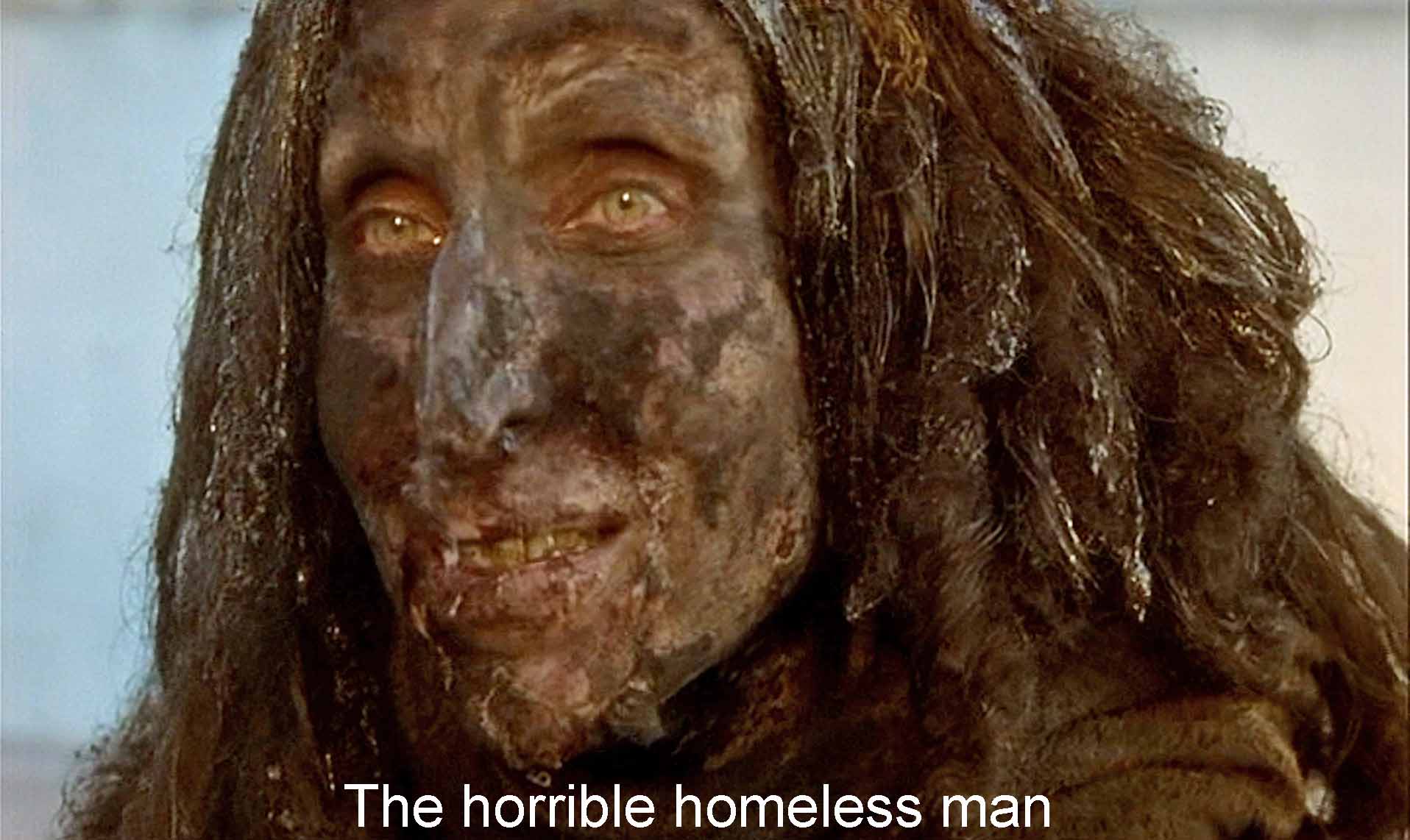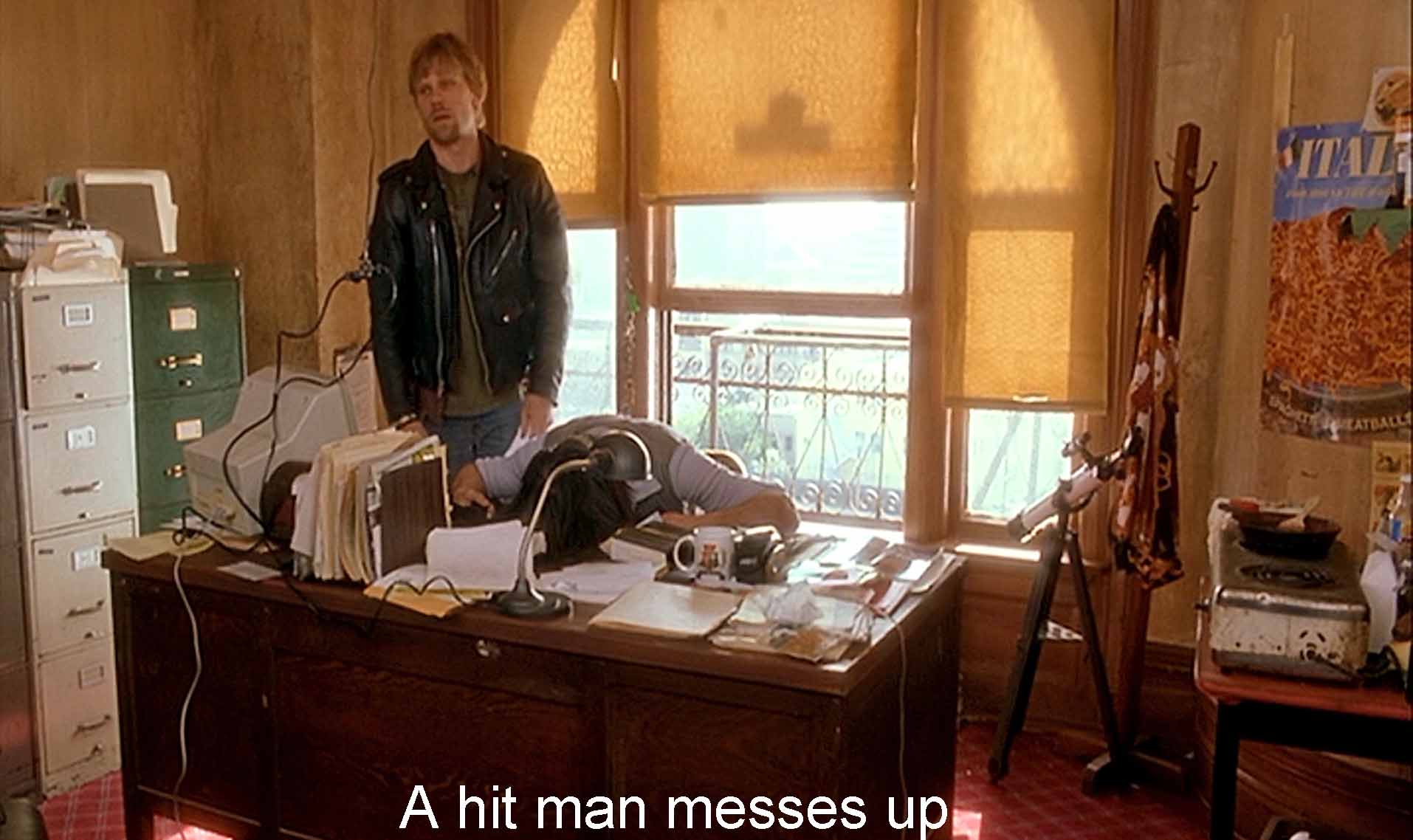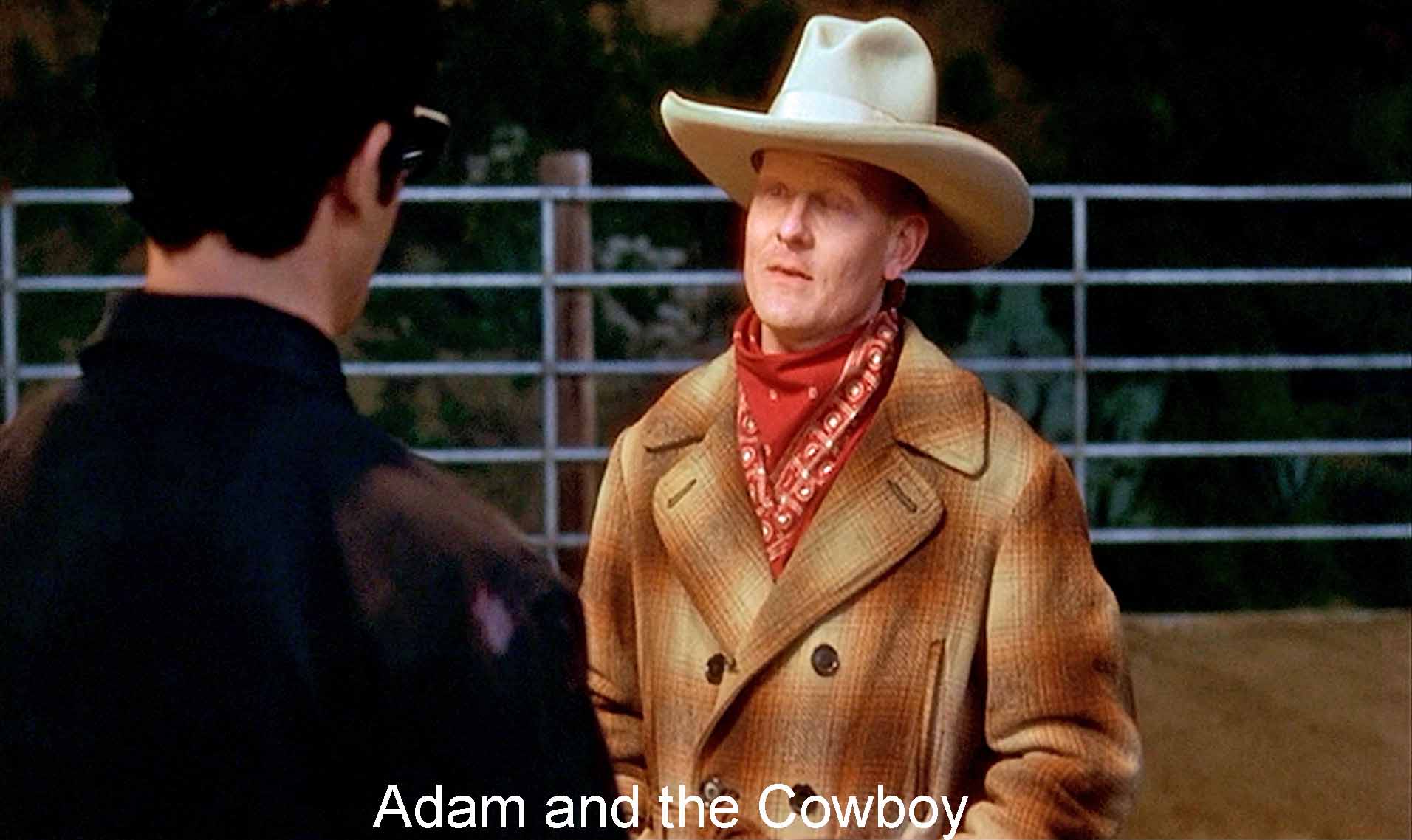Mostly these occur in story #1 (the main story). Throughout story #1, there is menace and mystery. Things become clearer and menace becomes real in story #3. Hence story #3 is tighter.
Why the incompetent hit man? He is for real in story #3, the instrument of Diane’s revenge, but mostly a joke in happy story #1. A Three Stooges killer, thus another reference to movies? A suggestion that Diane is not in control of her fantasizing? A wish that the hit man not kill Camilla after all?
Why the mafia plot? More menace in story #1. More denigrating of Hollywood: how art gives way to money and power. The makers of fantasy are not in control of the fantasies—including Diane Selwyn.
Why the pink paint on the jewelry? It’s surely a visual way of wrecking a woman’s jewelry, but colors are important throughout. Pink is associated with the blond woman whom the Mafia guys want in Adam’s movie. Blue with fate and Pandora’s box that yield story #3.
Why Mr. Roque? I take it, he is meant to be a Howard Hughes figure. Some sick human being hidden away with immense and mysterious power over the representations created in Hollywood.
Why The Cowboy? I take it he is a reference to “traditional Hollywood” (like Coco the concierge and various echoes of Sunset Boulevard). He looks more like a cowboy from the Roy Rogers era than the classic western heroes, though, an imitation of an imitation. Its all simulation—says Lynch.
Why the doo-wop singers? We see them as if by themselves first, then apparently in a recording studio, and then the camera pulls back and we see that all of it is part of a movie being shot on a movie set, which is part of the movie we are watching. More simulations.
Why the woman in apt. #12? Apparently Diane's live-in lover in the dark story was not beautiful Camilla but this ominous and surly creature.
Why does “Rita" disguise herself as a blonde? Well, she is in hiding. But at another level, it suggests that she and Betty/Diane are one (as in many of the interpretations): the other characters as aspects of Diane's psyche.
Why the horrible homeless man? (Who, curiously is played by a beautiful woman, Bonnie Aarons). This is the nightmare of what can happen to you, but in story #1, it is displaced onto two remote characters in an episode disconnected from Betty. In story #3, he has the blue box and unleashes the avenging older couple.
Throughout, there are small elements in story #1 that “leak” into story #3 where they don't belong. Words like “We don't stop here” or “This is the girl” or Adam's telling the party in story #3 about his wife's misbehavior in story #1. To me, they suggest that basically the two stories are two versions of one story.
And there are many more Why's, too many for this brief analysis.



